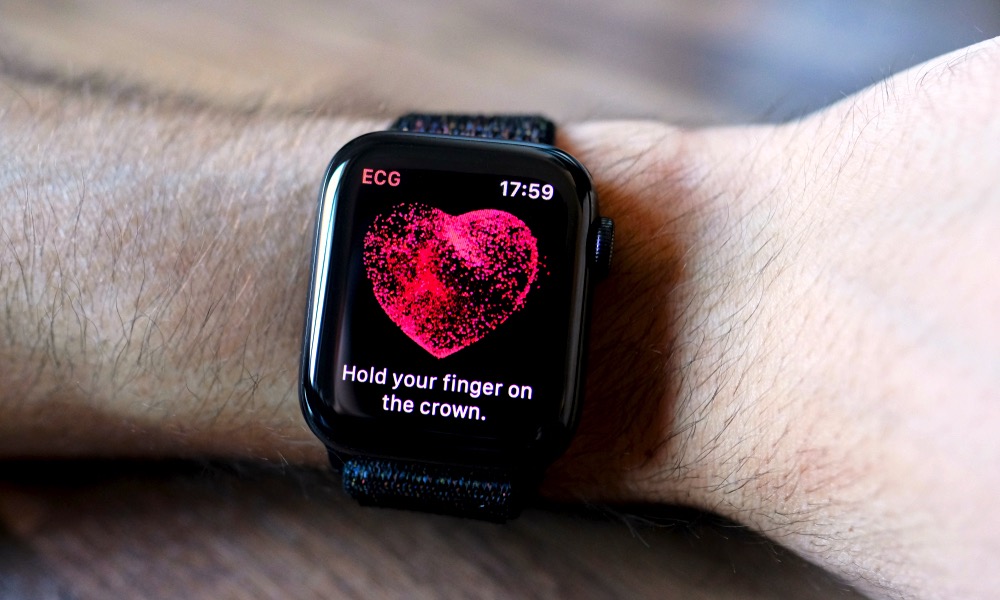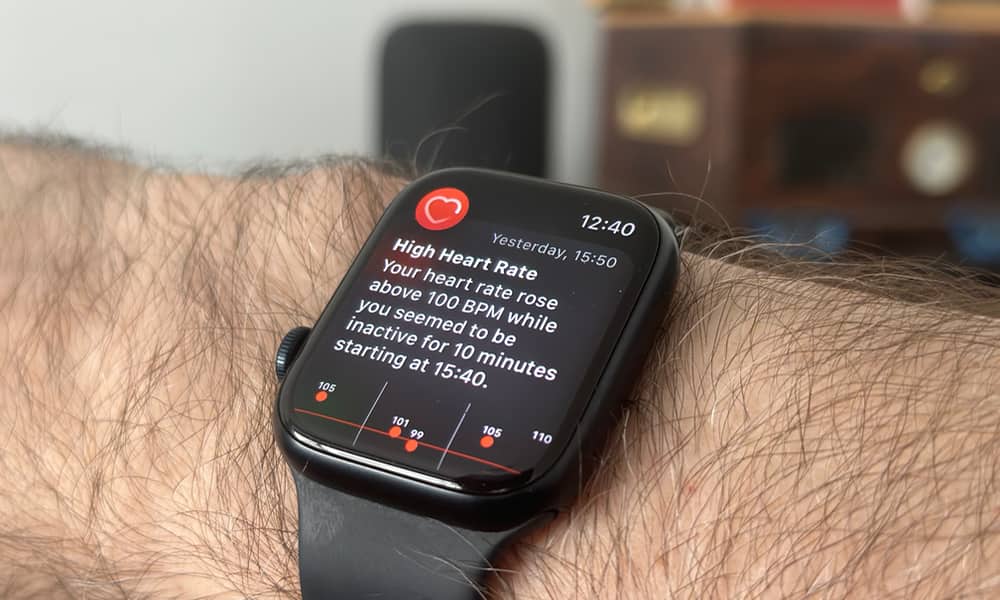Apple Watch Cardio Fitness Alerts Man to Major Heart Issue
 Credit: Fabio Mota / Shutterstock
Credit: Fabio Mota / Shutterstock
Toggle Dark Mode
The Apple Watch continues to save lives, as it not only helps users meet their fitness goals, it also warns them of potentially critical health issues.
Your Apple Watch can monitor several health categories, including “Cardio Fitness,” or VO2 max, which tracks the maximum amount of oxygen your body can consume during exercise. While it’s not uncommon to see a low VO2 max notification occasionally, users should consult a cardiologist if they see low VO2 max notifications repeatedly from the Apple Watch.
As reported by My Healthy Apple, a 40-year-old man who was thought to be in good overall health began receiving repeated notifications for low VO2 max from his Apple Watch Series 6. So, Shackler School of Medicine, Tel-Aviv, and Leviev Heart Center, Israel researchers conducted several tests on the individual, which identified familial nonischemic cardiomyopathy with severely reduced left ventricular systolic function, which is a serious heart condition.
Familial nonischemic cardiomyopathy occurs when a person’s heart muscle walls become both thinner and weaker in at least one chamber of the heart, enlarging the affected area. This leads to the heart being unable to efficiently pump blood as it should.
Luckily, the man’s symptoms improved once treatment began, which also included additional cardio exercise routines.
Researchers published their findings in the Interactive Journal of Medical Research, where they noted that a device like the Apple Watch can detect these types of conditions and hopefully spur users to have early screenings that can potentially identify these issues before they become more serious.
Apple Watch users should not ignore any notifications such as this and should track the notifications, contacting their doctor if the notifications continue.
This is just the latest in numerous reports over the years of the Apple Watch alerting users to hidden health problems.
In June, the wearable’s heart-monitoring features alerted a Cincinnati woman to a life-threatening issue, waking her from a nap to warn her of a blood clot.
Kimmie Watkins had felt lightheaded and dizzy, which she thought was caused by her not eating enough food. She decided to lie down for a nap. Following her 90-minute nap, Watkins was alerted by the Watch to a 178-beat-per-minute heart rate, waking her up with an alarm. The alarm told her that her heart rate had been too high for more than 10 minutes.
Watkins went to her doctor, who found she had a saddle pulmonary embolism., which is a severe and life-threatening blood clot. A saddle pulmonary embolism has only a 50% survival rate. Watkins did not have a history of heart issues. However, doctors discovered that she had a clotting disorder, and placed her on blood thinners. She is now working to regain her stamina.
In addition to the Apple Watch’s health category notifications, it also is known for saving lives in other ways.
In May, the Apple Watch Fall Detection feature, alerted first responders when a woman collapsed due to a potentially fatal heart issue.
The woman felt a pain in her chest while on a business trip. She messaged a friend that was staying in the same hotel about the pain, then fell to the ground.
Although the friend made it to her room in just a few minutes, when she called 911, she was informed that help was already on the way, as the Apple Watch had automatically dialed 911, due to its fall detection feature.
After being rushed to a nearby hospital, the woman was examined and found to have a ruptured aorta. A few days later she had surgery to repair the issue.









